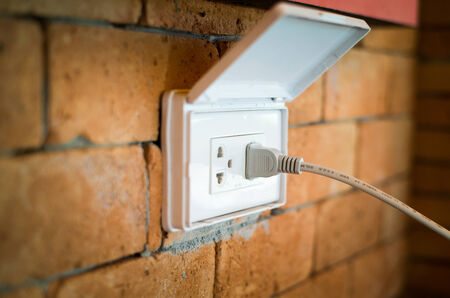1. Understanding the Importance of Outdoor Security Lighting
When it comes to protecting your home and loved ones, outdoor lighting plays a crucial role in American neighborhoods. Many homeowners are looking for ways to make their property safer, and one of the most effective solutions is installing the right kind of outdoor lighting. Proper illumination not only discourages unwanted visitors but also helps you and your neighbors feel more secure.
How Outdoor Lighting Deters Crime
Criminals prefer dark and poorly lit areas because they can hide more easily. By lighting up key spots around your home, you make it much harder for anyone with bad intentions to approach unnoticed. Studies have shown that homes with good exterior lighting are less likely to be targeted by burglars.
Common Benefits of Outdoor Security Lighting
| Benefit | Description |
|---|---|
| Deter Crime | Bright lights expose trespassers, making them think twice before acting. |
| Increase Safety | Prevents trips, falls, and accidents on walkways, driveways, and steps at night. |
| Boost Curb Appeal | A well-lit home looks more inviting and cared for, which can even improve property value. |
| Enhance Visibility | Makes it easier for you, guests, or delivery drivers to find paths and entryways. |
The American Neighborhood Perspective
Across the U.S., its common for people to gather outside in the evenings, whether its chatting with neighbors or kids playing after sunset. Good outdoor lighting supports this lifestyle by creating a welcoming environment while keeping everyone safe. It also helps first responders or emergency personnel quickly identify homes if needed.
2. Key Features to Look for in Security Lighting
Choosing the right outdoor lighting for home security isn’t just about picking the brightest bulb. To truly keep your property safe and well-lit, you’ll want to look for a few important features. Let’s break down what really matters when shopping for security lighting in the U.S.
Motion Sensors
Lights with motion sensors only turn on when they detect movement. This not only saves energy but also surprises intruders and alerts you or neighbors if someone is lurking around. Motion sensor lights are perfect for driveways, backyards, and pathways where unexpected activity should be noticed right away.
Dusk-to-Dawn Operation
With dusk-to-dawn functionality, your lights automatically turn on when it gets dark and off when the sun rises. This feature means you won’t have to remember to flip a switch and ensures your home always looks occupied, which is a strong deterrent against crime.
Weather Resistance
Outdoor lights need to withstand all kinds of weather—rain, snow, extreme heat, or freezing temperatures. Look for fixtures rated for outdoor use (like those labeled “weatherproof” or with an IP65+ rating). This way, your investment lasts longer, and your home stays protected no matter the season.
Brightness Levels
The level of brightness you need depends on where youre installing the light. Measured in lumens, higher numbers mean brighter lights. For reference:
| Area | Recommended Lumens |
|---|---|
| Entryways & Front Doors | 700-1300 lumens |
| Driveways & Garages | 1500-3000 lumens |
| Backyards & Sides of House | 1300-2000 lumens |
| Pathways & Walkways | 100-400 lumens |
This guide will help you avoid over-lighting or under-lighting different areas around your home.
Smart Technology Compatibility
If you already use smart home devices like Alexa, Google Assistant, or Apple HomeKit, consider getting security lights that can connect to these systems. With smart compatibility, you can control your outdoor lighting from your phone, set schedules, receive alerts if motion is detected, or even automate everything as part of your overall home security setup.
Quick Feature Comparison Table
| Feature | Why It Matters |
|---|---|
| Motion Sensors | Saves energy and alerts you to movement instantly. |
| Dusk-to-Dawn Operation | Keeps your property lit automatically every night. |
| Weather Resistance | Ensures durability through all seasons. |
| Brightness Levels | Makes sure each area has the right amount of light. |
| Smart Tech Compatibility | Adds convenience and better control to your security system. |
Selecting outdoor lighting with these features will help keep your home secure while fitting seamlessly into your daily life in America.
![]()
3. Best Types of Outdoor Security Lights
Popular Outdoor Lighting Options in the U.S.
When it comes to home security, choosing the right type of outdoor lighting can make a big difference. In the United States, homeowners often rely on several popular options that balance effectiveness, style, and budget. Lets look at some of the most common types and see what makes each one unique.
Comparison Table: Outdoor Security Light Types
| Type | Main Features | Pros | Cons |
|---|---|---|---|
| Floodlights | Wide-angle beams, usually high-powered, can cover large areas like driveways or backyards | Excellent for broad coverage Deter intruders effectively Often motion-activated |
Can be too bright for neighbors Higher energy use (unless LED) |
| Spotlights | Narrower beam, focused light for highlighting specific spots such as entrances or walkways | Great for targeted security Can highlight landscaping too Available in smart versions |
Limited coverage area May need multiple units for full protection |
| Wall-Mounted Fixtures | Attached directly to exterior walls near doors or garages; come in various styles and brightness levels | Adds curb appeal Easy to install Many have built-in motion sensors |
Might not cover large areas Some styles less durable outdoors |
| Solar-Powered Lights | Use sunlight to recharge batteries; available as floodlights, spotlights, or pathway lights | No wiring needed Energy efficient & eco-friendly Lower operating costs |
Performance depends on sunlight Less bright than wired options Batteries may need replacing over time |
Choosing the Right Light for Your Home
Your choice will depend on your homes layout, your neighborhoods typical lighting needs, and your personal preferences. Floodlights are perfect if you want to light up a big backyard or driveway. Spotlights are ideal for focusing on entry points or specific features around your home. Wall-mounted fixtures are both practical and decorative, fitting nicely by your front door or garage. For those looking to save on electricity bills and reduce their environmental impact, solar-powered lights are a great pick—just remember they work best where theres plenty of sun during the day.
Pro Tips:
- Combine Different Types: Mixing floodlights with wall-mounted fixtures can help eliminate dark spots around your property.
- Consider Motion Sensors: Many American homes use motion-activated lights to surprise potential intruders and save energy.
- Choose LED Bulbs: No matter which type you choose, LED bulbs offer longer life and lower energy costs.
The right combination of these outdoor security lights can give your home that extra layer of protection while also boosting its nighttime curb appeal.
4. Strategic Placement Tips for Maximum Effectiveness
When it comes to outdoor lighting for home security, where you put your lights is just as important as the type you choose. Strategic placement ensures you cover all the vulnerable areas around your home, making it harder for intruders to approach unnoticed. Here’s how you can maximize your security with smart lighting placements.
Key Locations for Security Lighting
| Area | Placement Tips |
|---|---|
| Entry Points (Front & Back Doors) | Install wall-mounted lights on both sides of each door or above the doorframe. Make sure the entire doorway and steps are well-lit to deter intruders and make entry safer for residents and guests. |
| Pathways & Walkways | Use stake or bollard lights along paths leading to your doors. Evenly space them out to avoid dark spots and help guide visitors safely at night. |
| Garages & Driveways | Place motion-activated floodlights above garage doors and along the driveway entrance. This not only deters trespassers but also helps you see clearly when parking or walking in after dark. |
| Backyard & Side Yards | Install spotlights aimed at gates, sheds, or any hidden corners. Consider motion sensors for wide coverage without high energy use. Lighting up these less-visible areas increases overall safety. |
Additional Placement Advice
- Avoid Glare: Aim lights downward or use shields to prevent glare that could hinder your vision or bother neighbors.
- Layer Your Lighting: Use a combination of ambient, task, and accent lighting to eliminate shadows where intruders could hide.
- Smart Controls: Opt for fixtures with timers, dusk-to-dawn sensors, or smart home integration for effortless operation and consistent coverage.
- Cameras & Lights: Pair security cameras with lighting to ensure clear footage at night—place lights out of the camera’s direct field of view to reduce glare on recordings.
Quick Reference: Ideal Security Lighting Placements
- Main Entry: Both sides of the front door + porch ceiling light
- Back Door: Overhead light + side wall lights if possible
- Garage: Above doors (motion-activated preferred)
- Driveway: Floodlight facing entrance or motion spotlights along edge
- Walkways: Stake lights spaced 6-8 feet apart
- Yard Perimeter: Spotlights at fence corners and near gates
- Sheds/Gates: Motion sensor light above entrance point
By thoughtfully placing outdoor security lights in these key areas, you create a welcoming environment while significantly improving your home’s protection against unwanted activity.
5. Installation and Maintenance Best Practices
Safe Installation Tips
Proper installation of outdoor security lighting is key to both safety and effectiveness. Here are some tips to follow:
- Turn Off Power: Always shut off the power at the breaker before starting any electrical work.
- Use Weatherproof Fixtures: Choose lights rated for outdoor use and ensure all wiring and connections are protected from moisture.
- Follow Local Codes: Check your city’s building codes or consult a licensed electrician to make sure everything is up to standard.
- Mount Lights Securely: Install fixtures tightly so they can withstand wind, rain, and other elements.
- Avoid Glare: Position lights so they don’t shine directly into windows or onto neighboring properties.
Regular Maintenance Checklist
Keeping your outdoor lighting in top shape means checking it regularly. Use this simple checklist:
| Task | How Often | What to Do |
|---|---|---|
| Clean Fixtures & Lenses | Every 3-6 months | Wipe away dirt, spider webs, and debris with a damp cloth. |
| Check Bulbs & LEDs | Quarterly | Replace burned out bulbs; test motion sensors and timers. |
| Inspect Wiring & Connections | Annually | Look for wear, corrosion, or exposed wires and repair as needed. |
| Test Coverage & Angles | Twice a year | Make sure all areas remain well-lit as landscaping grows or changes. |
Energy Efficiency Tips for Outdoor Security Lighting
Saving energy not only helps the environment but also cuts down on your utility bills. Here’s how you can make your outdoor lighting system more efficient:
- Use LED Bulbs: They last longer and consume less power compared to traditional bulbs.
- Add Motion Sensors & Timers: Lights only turn on when needed, reducing unnecessary usage.
- Solar-Powered Options: Consider solar lights for areas that get plenty of sun—they’re easy to install and run on free energy!
- Select Lower Wattage Where Possible: Choose the lowest wattage that still provides effective coverage for each area.
The Bottom Line: Keep Your System Effective Long-Term
A well-installed and properly maintained outdoor lighting system makes your home safer while saving you money over time. Regular checks and smart choices will keep your property secure night after night.


